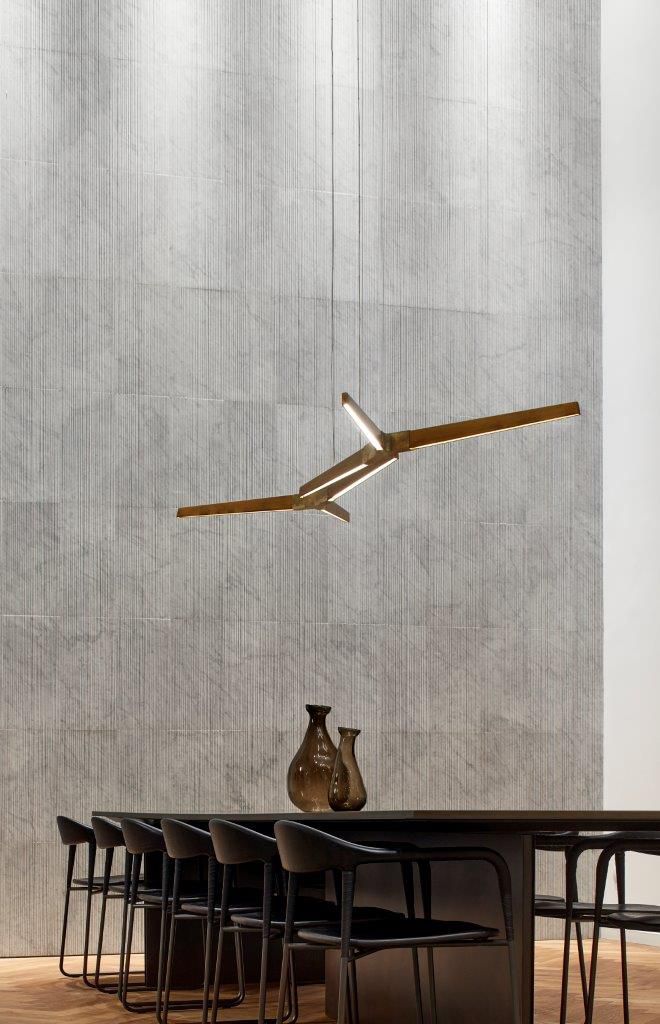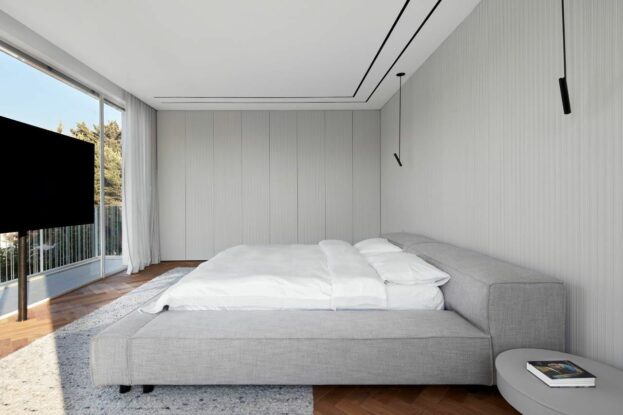While the trend of green building has shone a spotlight on the importance of utilizing natural sunlight, technological developments have also made the lighting field more complex, sophisticated, and expensive than ever before. Lighting is arguably one of the most important elements in a home, with the power to directly influence our feelings and experience in a given space. In honor of the Festival of Light: Everything you need to know about lighting when building or renovating a home in Israel.
In homes in Israel where most Israelis grew up, a single power point was installed for lighting in the ceiling of each bedroom. There were two in the living room: one above the approximate location of the seating area, and the other above the dining area. To this day, this is the standard by which new apartments are finished in Israel.
However, lighting options today, especially in the field of self-construction, are far more numerous and varied. From sophisticated lighting systems that rely on small but powerful LED bulbs, whose importance to the interior design of the house is no less than that of furniture and decorative accessories, to the growing sophistication in the field of green construction, of which optimal utilization of sunlight is one of its cornerstones.
“Lighting needs to be planned appropriately and effectively,” says Shlomit Zeldman, an experienced architect with an architecture and interior design firm. “First, it has to be practical. That is, to provide a solution to the common scenarios during the family’s time at home: What is appropriate lighting for watching TV? What type of lighting will be suitable for a family meal? What minimal means of lighting are required in the middle of the night when someone needs to get to the bathroom without walking into walls?”
But beyond the practical uses, Zeldman stresses that lighting today is much more than that: “Lighting also serves to create an atmosphere. Many times we are in a space that feels dramatic to us, or a space that makes us feel very pleasant, but when you think deeply about what element caused these feelings, we find that it was the lighting.”
Lighting also serves to create an atmosphere. Many times we are in a space that feels dramatic to us, or a space that makes us feel very pleasant, but when you think deeply about what element caused these feelings, we find that it was the lighting — Shlomit Zeldman, Architect & Interior Designer
When asked about the lighting systems she uses in home and apartment designs, Zeldman replies: “I’m quite modernist in my design, and I like all the lighting to be recessed in the ceiling, except in specific cases, such as, to illuminate a picture. The incandescent bulb that was commonly used until about a decade ago has become obsolete. Today, almost all lighting is LED, and there are a variety of qualities that affect the price.”

The color of light also plays a significant role in creating the atmosphere, with most of the variety ranging from “warm light” that we see as yellow, to “cold light” that we see as white, and finally also daylight-like lighting. “Today’s technology allows us to introduce lighting intensities that in the past required huge projectors for tiny LED bulbs,” says Zeldman. “This gives us a lot of design options, such as a combination of lighting inside furniture – cabinets that light up when you open them, putting light bulbs into tables, and more.”
What are the costs of lighting systems for a standard-sized private home?
“Costs vary depending on quality. You can spend 15,000 shekels on lighting when you build a house, 250,000 shekels, or half a million shekels. You can purchase lighting equipment from high-end companies, such as Italian Viabizzuno, one of the leaders in the field whose every product is “state of the art”, or, as in any area, you can buy cheap Chinese products and accessories.”
Then, there is also natural lighting planning, which is gaining momentum along with the trend of green construction. According to architect Dan Lifshitz, owner of an architectural firm that also specializes in self-construction, “proper utilization of natural sunlight, with correct shading, will lead to a much more pleasant feeling and make it more inviting and desirable to stay in the spaces of the house. This is in addition to other significant advantages such as regulating the temperature in such a way that will lead to savings in electricity expenses.”
How can those who build a home today maximize natural lighting?
“Firstly, when building a house, you need to examine the location of the property in relation to its surroundings, buildings, mountains, or lush trees, and thus understand the direction of the sun and the potential for natural light. The ideal glazing area, that is the area for windows, should be about 15% of the floor area. But in homes that are not sufficiently exposed to sunlight, we increase this area, and in homes that we identify as overexposed, we reduce it.”
In terms of recommended directions of exposure to maximize the benefit of natural lighting, Lifshitz surprisingly responds that there is really no ideal direction since each direction has its advantages and disadvantages. “South is a popular air direction because people know that it brings light and warmth. But in a hot country like Israel, it is a tricky issue, because of the abundance of heat and light from the sun. When sunlight enters the home in an uncontrolled manner, it may be too strong and not very pleasant.” The same effect, he said, may arise with a west direction in the afternoon, when the sun is low.
“The goal is to get as little direct sunlight as possible, and as much non-direct natural light as possible, which is soft and pleasant in nature and disperses better around the home,” he explains, “a north direction is a direction in which there is no direct sun at all, but in this case, there is a concern that we will not get sufficient light. Therefore, in north-facing homes, I design larger-than-average window openings.”
The goal is to get as little direct sunlight as possible, and as much non-direct natural light as possible, which is soft and pleasant in nature and disperses better around the home — Dan Lifshitz, owner Dan Lifshitz Architects
How is it recommended to arrange the rooms of the house in relation to the different directions?
“South is the direction that gets the most light, so I tend to set up the common areas there such as the living room. The areas in the house that are intended for rest will ideally be designated in the north, but this is, of course, a completely theoretical situation. In many cases, there are other variables, such as the location of the street in relation to the apartment, public parks, and so on.”
There are, unquestionably, many different ways to deal with direct sunlight – awnings, curtains, and a variety of shadings. Another creative solution, according to Lifshitz, is a “light shelf” – “a horizontal surface that is installed across the window and serves as a reflector that receives the direct sunlight and diffuses it to the ceiling.”
The world of natural lighting also includes skylights in the ceiling, which bring in natural light, and, throughout the day replace the use of artificial lighting. Even basements can now receive natural light through transmission piping using mirrors, which are installed by specialized companies.
So, gone are the days when home lighting design in Israel consisted of simply choosing a few lampshades, and it seems that anyone who is building his own home nowadays or even renovating an existing residential apartment, will have to devote a lot of thought to lighting plans and design, as well as quite a few shekels. However, this is an investment that pays off – a higher quality of life, a more pleasant atmosphere, and even the potential to save electricity. Good luck and Happy Chanukah!



